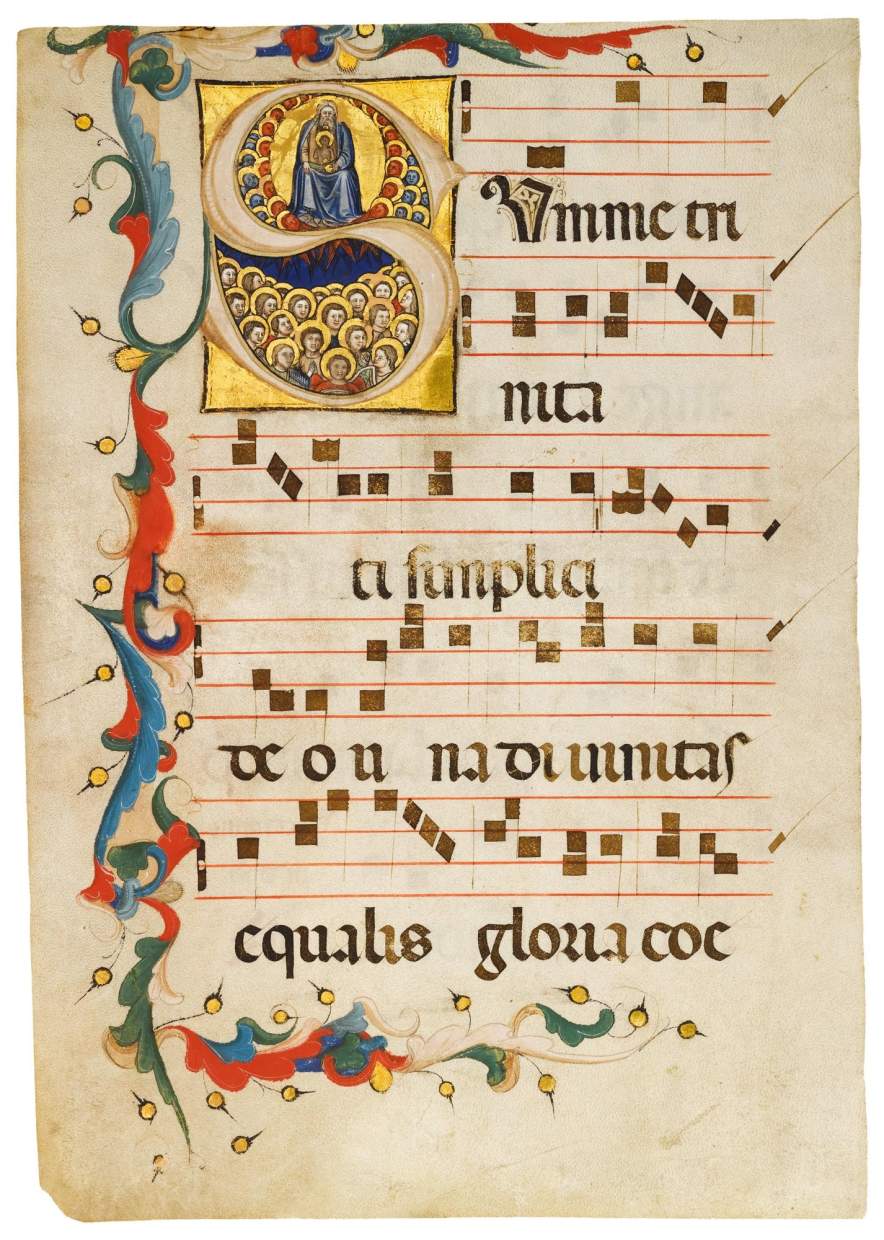Artworks


Trinity adored by the angelic hierarchy
Initial S from an Antiphonal, illuminated in the workshop of the Genesis Master Italy, Padua, c. 1390


Trinity adored by the angelic hierarchy
Initial S from an Antiphonal, illuminated in the workshop of the Genesis Master Italy, Padua, c. 1390
Detail: Historiated initial

The glorious initial S on a field of gold encloses the Holy Trinity in heaven adored by the angelic choirs closest to God, the red Seraphim, and the blue Cherubim. In the lower register, numerous other angels (or are they saints?) sing and play musical instruments. Their broad faces and wakeful eyes are reminiscent of those in the brilliant frescoes in the Duomo of Padua, especially those in the Baptistery.
The illuminator of this fine leaf is strongly indebted to Giotto’s later interpreters in Padua and generally to Paduan painting of the last quarter of the 14th century. The border decoration with colourful acanthus leaves may be based on the traditional models used in Bolognese illumination, which over a long period of time influenced Paduan illumination. However, the present illuminator draws from a figural repertory foreign to Bolognese illumination and is firmly rooted in the tradition of the leading mural and panel painters active around 1370/1380 in Padua, such as Altichiero and most of all Giusto da Menabuoi (c. 1320-1391). Menabuoi's brilliant frescoes with scenes of the Old Testament in the Baptistery in the Paduan Duomo greatly inspired the painters of the codices that were to function at Mass or other Offices, in the cathedral and elsewhere.
The heavenly choirs adoring the Trinity show figures with rounded faces, large cheeks and wakeful eyes that are remarkably reminiscent of the models created by Giusto da Menabuoi. His style also influenced the masters of the lavishly illustrated Paduan Bible now divided and preserved in London and Padua. The same artistic milieu - among whom especially the so-called Second Master of the Genesis - was also responsible for the decoration of the somewhat later choir-book series for the Collegiata in Monselice (c. 1390-1410),
The artistic relationship with the great fresco cycles in Padua of the 1380s-1390s and the illustrations of the later Monselice Antiphonaries, suggest, that our leaf is attributable the workshop of the Genesis Master, arguably by the Second Genesis Master, and should be dated to the last decade of the 14th century.
The present leaf is not, as the iconography may imply and as is more usual, part of the liturgy for the feast of Trinity Sunday (a movable Feast at the end of May or in June). However, it opens the First Responsory at the First Nocturne of the feast of All Saints on November 1st. The texts on recto and verso both refer to the Adoration of the Holy Trinity by all saints and all the angels.
Read more about this artwork in our Spotlight.



